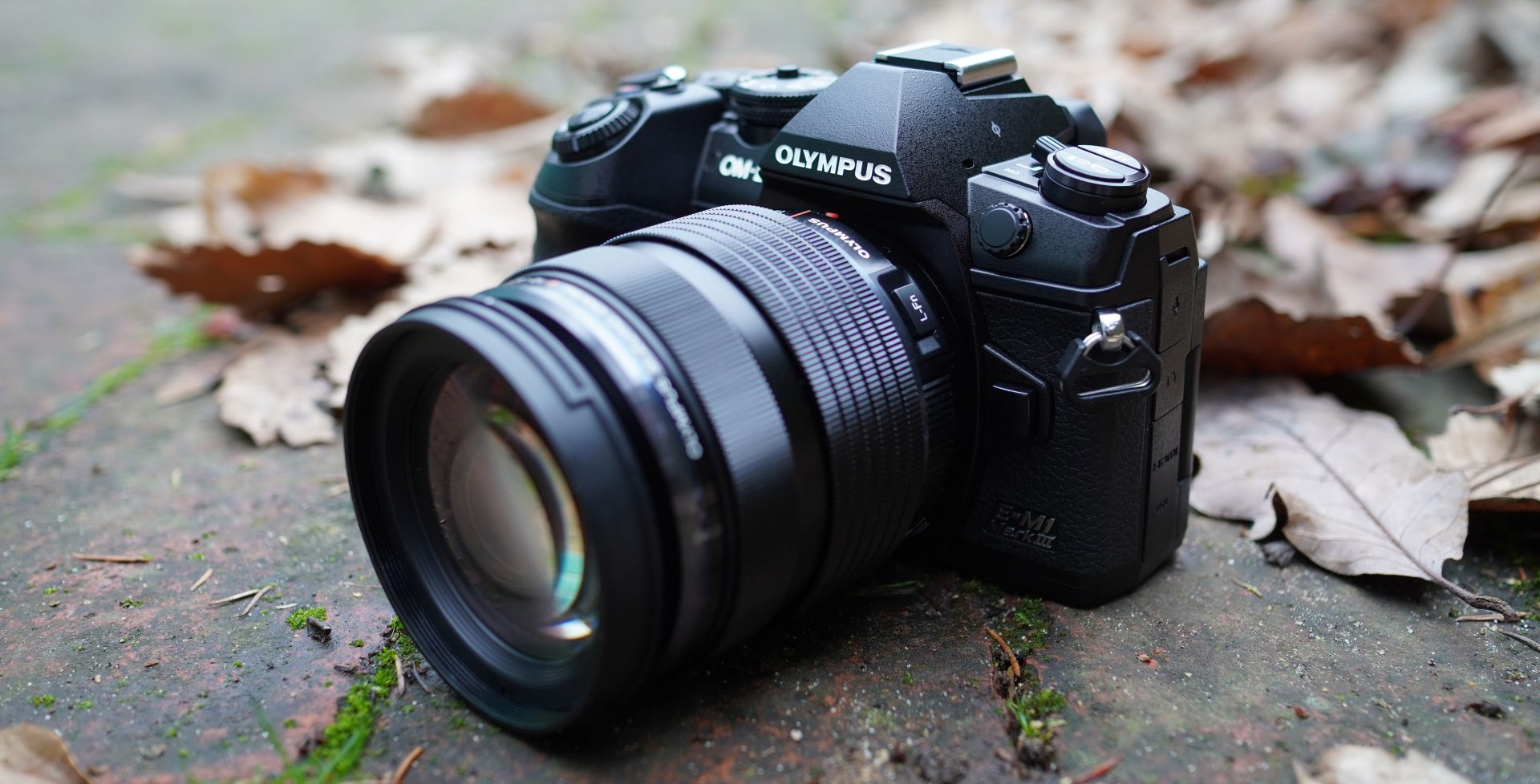Olympus OMD EM1 III review so far
-
-
Written by Gordon Laing
Olympus OMD EM1 Mark III, a high-end mirrorless camera aimed at photographers and videographers who value speed, robustness and portability. It has a 20 Megapixel Four Thirds sensor, 4k up to 30p, built-in stabilisation with up to 7.5 stops of compensation and 18fps bursts with autofocus, all packed into a tough weather-proof body.
Announced in February 2020, it comes three and a half years after the EM1 Mark II which Olympus will continue to sell alongside the new model at a reduced price of 1300 pounds; I’ll link to updated pricing in the comments and description below. With last year’s EM1X occupying the top-spot in the OMD range, the EM1 III now sits between it and the more consumer-oriented EM5 series, but still aims high by sharing many features with the flagship. That said, since many of the EM1X’s features were already inherited from the earlier EM1 Mark II, the new Mark III model represents a mild update over its predecessor.
I had a chance to try out an initial production version of the camera, so the performance, quality and features should be close to – or even the same as – final production samples. I’ve filmed a first-looks video which goes over the highlights and my first impressions below, and if you prefer a written version, keep scrolling! As always, I’ll follow-up with a much more detailed in-depth review once I’ve spent more time with the camera.
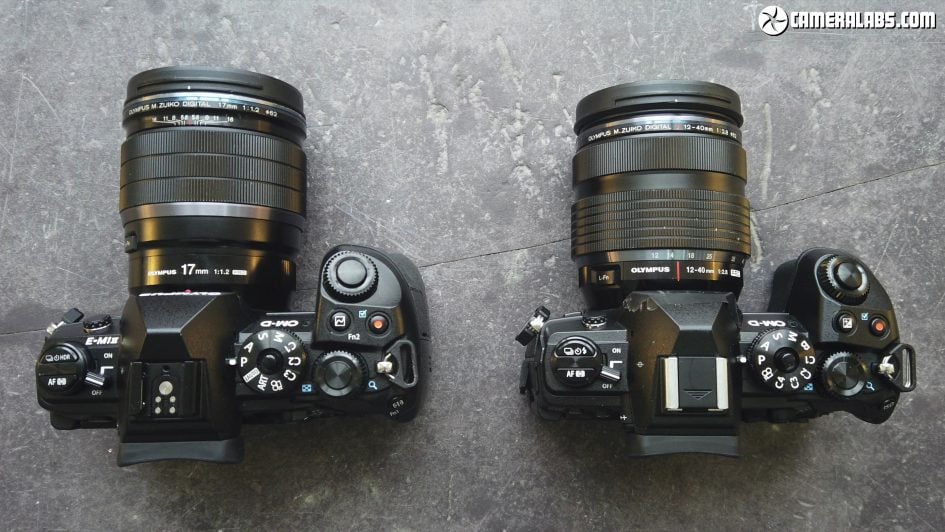
Above: Here’s the new EM1 III on the right with the previous Mark II on the left and the similarities are more than skin-deep. The Mark III shares the same sensor, viewfinder, screen, burst speed, movie quality, card slots, battery and essentially the same body as its predecessor. The Mark III does however inherit the improved shutter mechanism and stabilisation unit of the EM1X, allowing it to offer the handheld high res mode of the flagship, while a new image processor not only supports the Live ND feature of the EM1X, but the best face and eye detection in the series to date. There’s also a new starry sky mode that claims to autofocus on stars, as well as Bluetooth, charging or power delivery over USB, and an AF joystick that were all notably absent from the Mark II. And while there’s still no 4k above 30p, the EM1 III does at least offer Auto ISO in Manual movie exposures as well as 1080 at 120p and OM Log for grading. Ok, now let’s get into more detail.
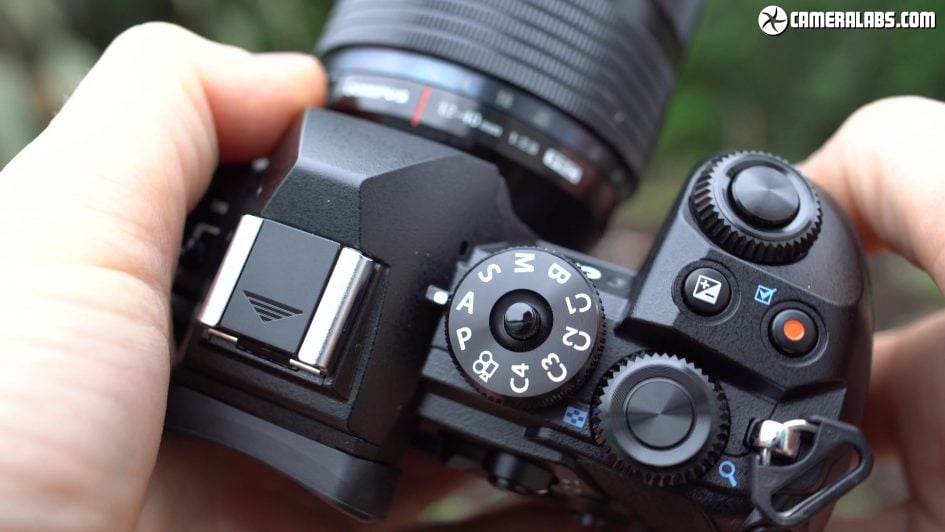
Above: As you’ve already seen, the EM1 Mark III shares essentially the same body and controls as the Mark II, but since it all worked so well, I’m not complaining. So on the upper left side you have the drive, flash, focus and metering buttons with a power switch retro-styled to look like a film rewind lever. Meanwhile on the right side the EM1 III gets the mode dial from the EM1X, swapping the Art filter and auto positions for a fourth Custom mode and a dedicated Bulb position, providing easier access to the innovative Live Composite, Live Bulb and Live Time options; Art filters are still available, but through the menus. In terms of exposure control there’s still satisfyingly large and tactile dials for your thumb and finger, although the latter is now a little clickier than before.

Above: Turning to the rear, Mark II owners will notice the earlier AF area button has now been switched into a dedicated one for ISO; this is because the AF button has now become redundant thanks to the long-overdue addition of an AF joystick, a control that was sorely missing on the Mark II. As before you can use the touchscreen to reposition the AF area, but there’s nothing like doing it by pushing the joystick around and it’s one of the most important physical upgrades here.
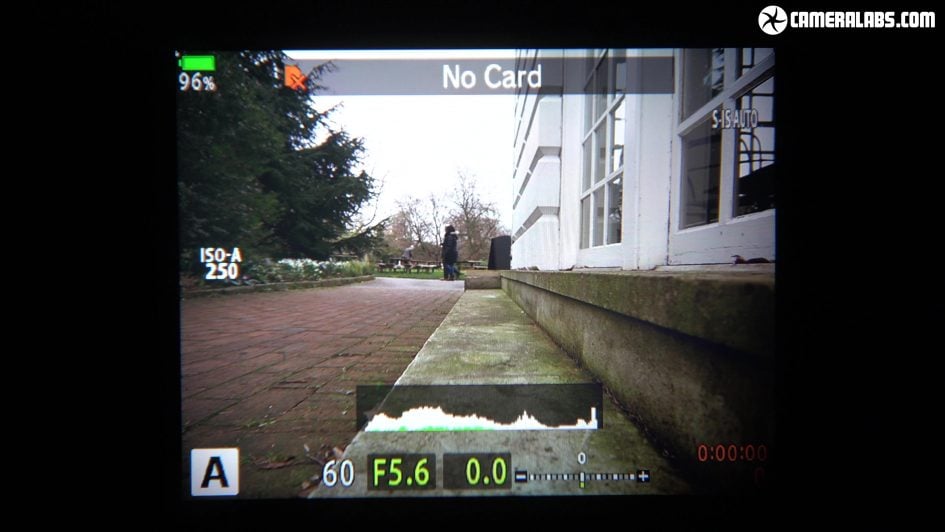
Above: The Mark III shares the same viewfinder as its predecessor: an LCD panel with 2.36 million dots and 0.74x magnification; the EM1X uses the same panel but with larger magnification. This relatively modest resolution is at odds with the rest of the industry which has adopted higher contrast OLED panels with noticeably higher resolutions too. But Olympus has stuck with this LCD panel as it reckons it’s the best option for delivering 120fps with progressive scan for maintaining detail on moving subjects with continuous AF, when rival technologies often reduce their detail. I’ll do some side-by-side comparisons in my final review.
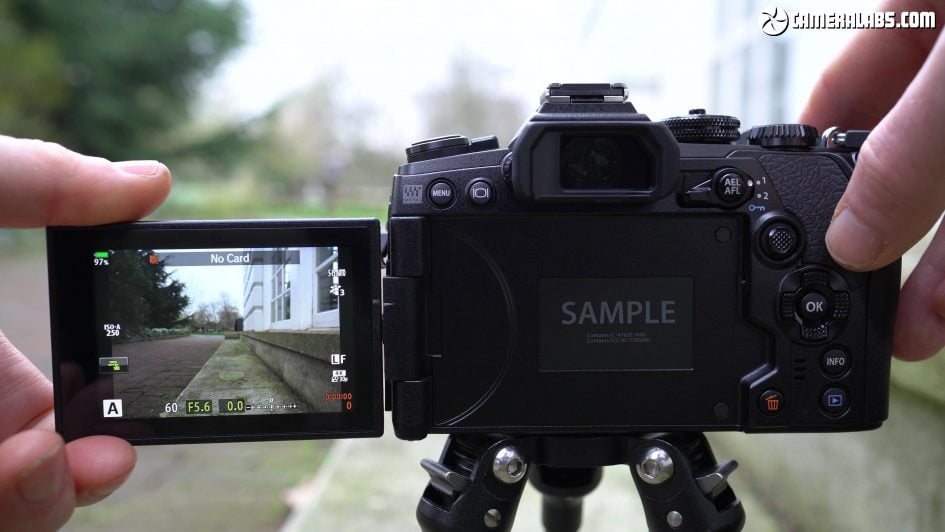
Above: Olympus has stuck with the same screen too, so the Mark III inherits the 3in 3:2 shaped touch-panel with 1037k dots that can twist and flip in any direction. I personally prefer side-hinged screens like these as while they’re slower and less discreet to fold out than one that just tilts vertically, you’re able to compose comfortably at high or low angles whether in the landscape or portrait orientation, plus you can face it forward for vlogging without being blocked by a tripod or hotshoe-mounted accessory.
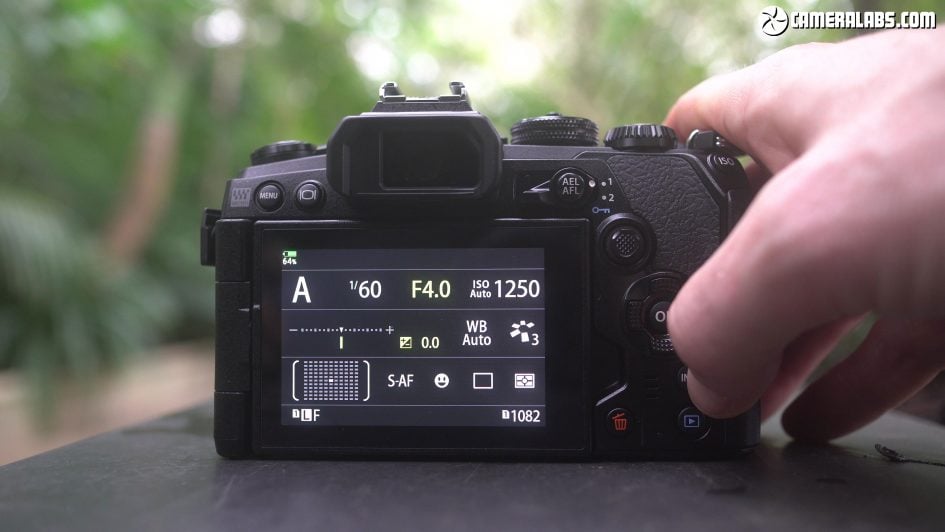
Above: The user interface is essentially the same as before, but Olympus has added an alternative view for the Super Control Panel if desired. So if the original was too intimidating with its detail, you can swap it for a simpler version – or back again if you prefer.
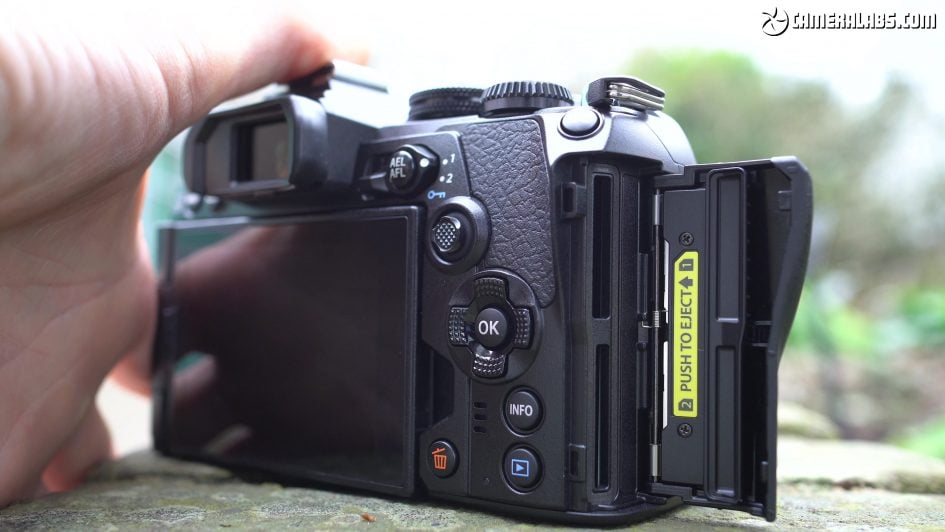
Above: The Mark III inherits the twin SD slots of its predecessor, and the tech behind them is the same which means only one of them will exploit the extra speed of UHS-II cards. This is disappointing, with Olympus explaining the board they use with twin UHS-II slots on the EM1X was too large to fit in the EM1 body. That said, Fujifilm uses a shorter board with twin UHS-II slots on the XT3, but again it would require a redesigned body. The bottom line is you’re unlikely to notice this restriction unless you’re recording large bursts to both cards, in which case the buffer may reduce and be slower to clear.
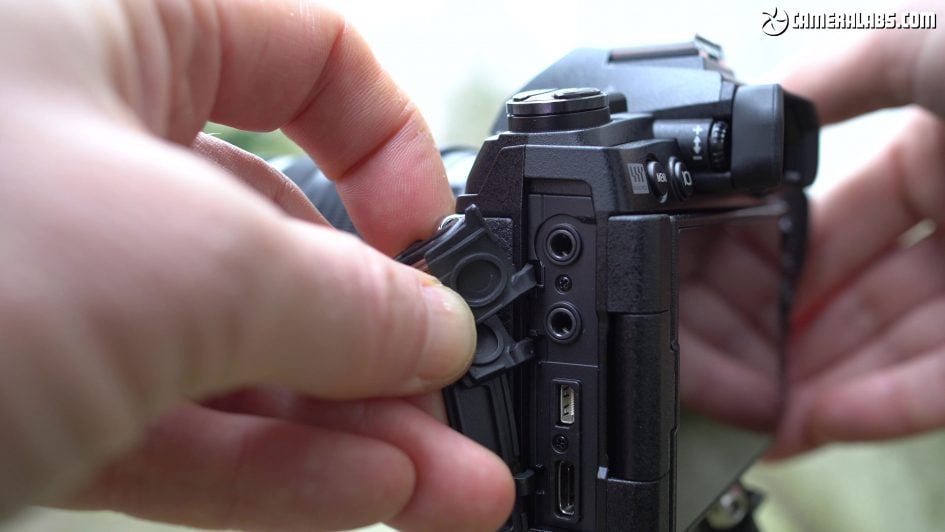
Above: The selection of ports remain the same as the Mark II as well, with USB-C, Micro HDMI, microphone and headphone jacks, although in a useful upgrade over its predecessor, the Mark III can now be powered or charged over USB, so long as the source conforms to the USB Power Delivery spec. The battery’s also the same as before, but to be fair the Mark II sported one of the first really high capacity packs for mirrorless cameras, so it still works well here.
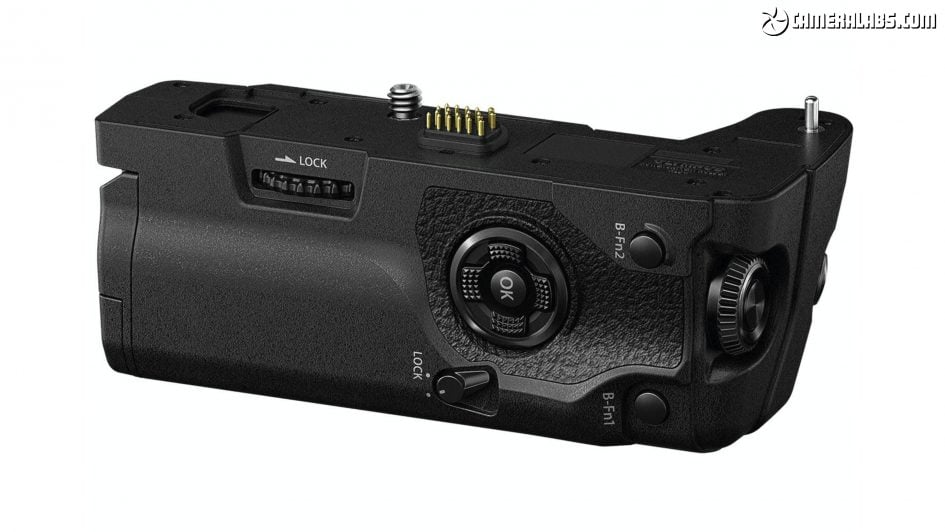
Above: The Mark III body can also be fitted with the same HLD-9 battery grip as the Mark II, accommodating an extra pack to double the life, while also providing portrait controls albeit without a duplicate AF joystick.
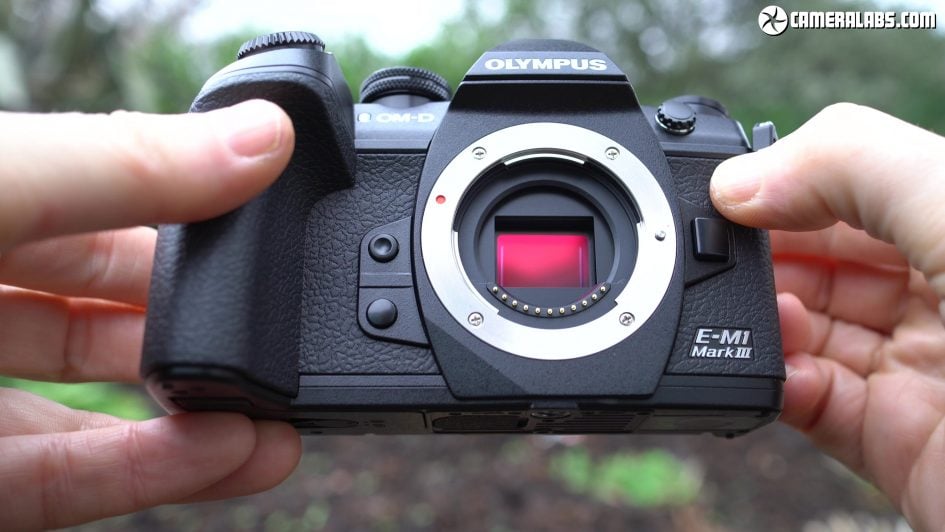
Above: Like all Olympus mirrorless cameras, the EM1 III uses the Micro Four Thirds system, providing access to one of the broadest catalogues of native mirrorless lenses around, and Olympus also introduced a new 12-45mm f4 zoom alongside it. At the heart of the Mark III lies the same 20 Megapixel sensor which made its debut on the Mark II three and half years earlier. Following the EM1X and EM5 III, this makes it the fourth Olympus camera to use the sensor which sports 121 embedded cross-type phase-detect AF points, giving it an advantage in continuous autofocus over its Micro Four Thirds partner, Panasonic. Olympus has partnered it with a brand new image processor, the TruePic IX, but in terms of image quality when shooting normally it’s essentially the same as the Mark II. Like many of you, I’m always hoping for a new sensor that’ll deliver better quality without compromise, and you may be disappointed to find the EM1 III stands still in this regard, but equally you have to ask yourself if you’re already satisfied by the output from the sensor. Personally speaking I’m happy with the photo quality, especially when coupled with the feature-set of the body, but there’s no getting away from the fact that most of its rivals at this price point are likely to employ new or at least more recent sensors. Plus if the EM1 follows the schedule of the previous two models, you’ll not see a new sensor in this series until 2023.
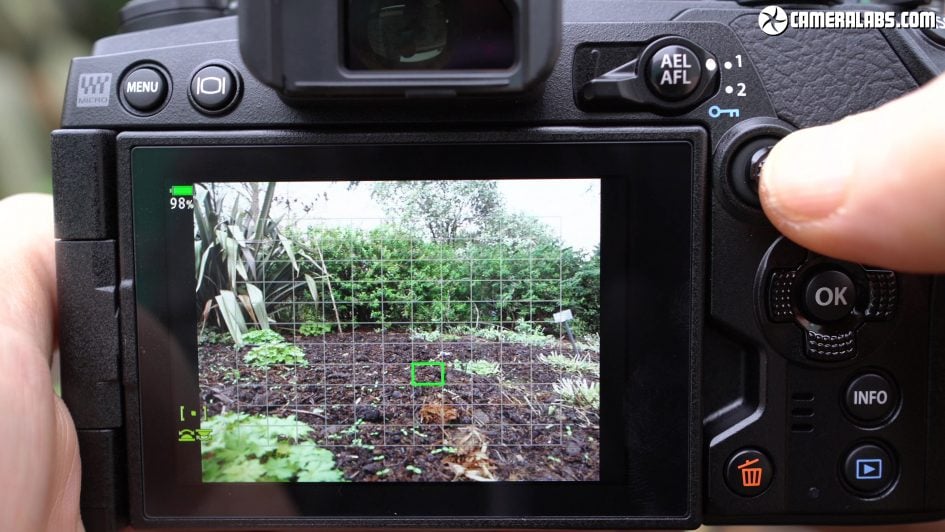
Above: With the same sensor, the EM1 III also inherits the same core autofocus system of its predecessor, which differs from most embedded phase-detect AF systems by defining them all as more accurate cross-type sensors. As before it’s quick and accurate whether focusing on static subjects or those in quick motion. Olympus hasn’t equipped the Mark III with the vehicle object tracking of the EM1X – perhaps due to its processor speed or market positioning – but TruPic IX does boast the best face and eye detection from the company to date, recognising them from further away or more in profile, and you can tap or toggle between multiple faces.
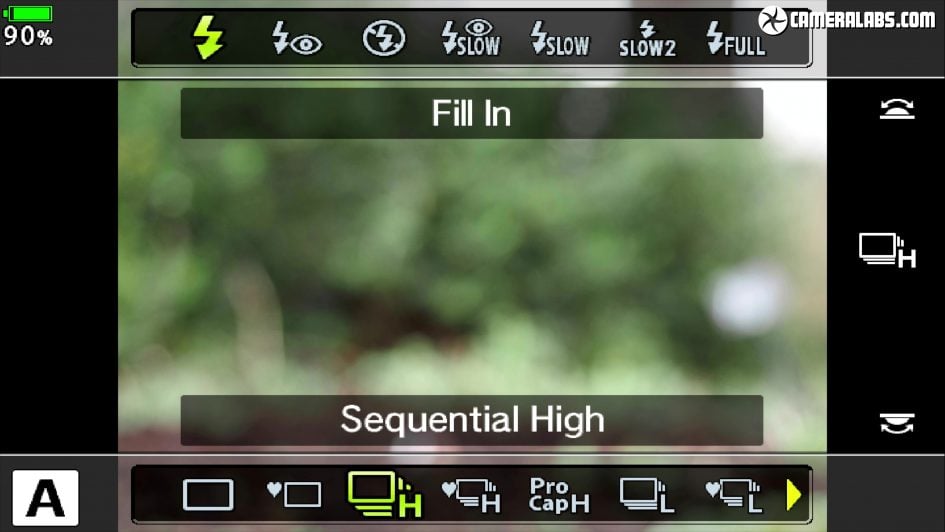
Above: Burst shooting is also inherited from the Mark II, which is fine as it was already fast enough. So you if you need continuous autofocus you can shoot at up to 10fps with the mechanical shutter or 18fps with the electronic shutter, or if you’re happy with fixed focus, you can accelerate them to 15fps mechanical or 60fps electronic. It’s pretty quiet and with the mechanism inherited from the EM1X, it’s now rated twice as long as the Mark II at 400,000 actuations.
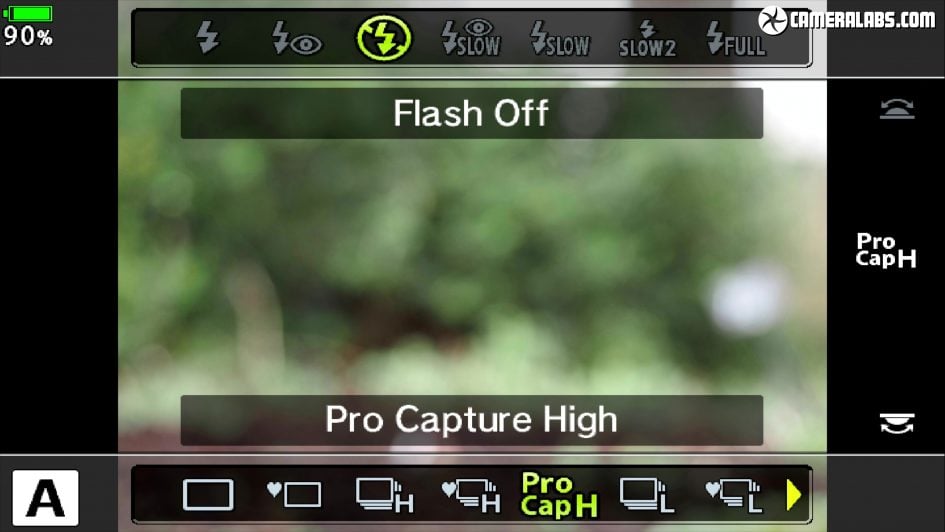
Above: Like the Mark II, the optional Pro Capture mode uses the electronic shutter to keep a rolling buffer of the last couple of seconds ensuring you never miss a moment when you fully push the shutter. The Mark III can now buffer up to 35 frames in JPEG or RAW – comfortably more than the Mark II allowed, which works out at two second’s worth of action if you’re using the 18fps shutter with continuous autofocus. It’s ideal for grabbing the moment a bird takes flight.

Above: The Mark III also inherits focus bracketing as well as in-camera focus stacking, although doubles the number of frames in the stacking mode to 15, making it much more practical. Here’s an example of a focus-stacked image generated in-camera – thanks to the broader number of frames captured you may not need to do a conventional bracket and external comp for less demanding situations.
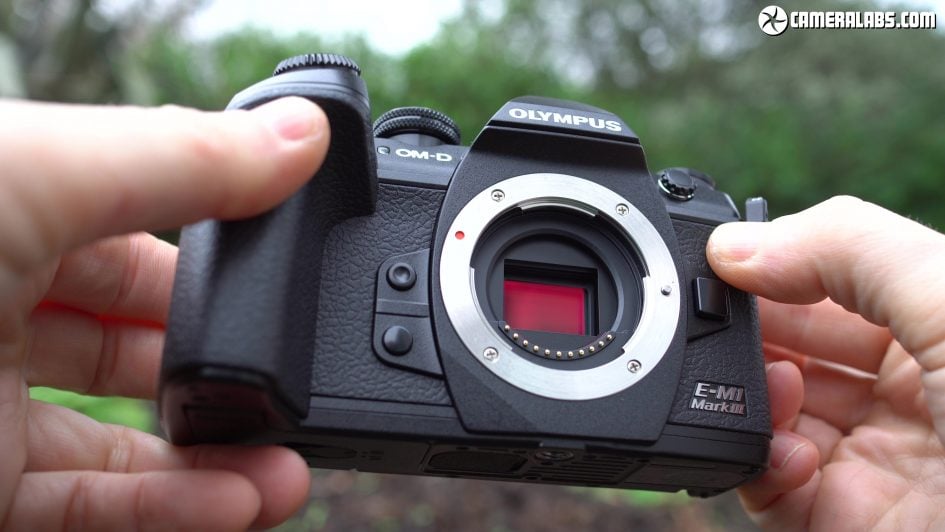
Above: the highlight of any Olympus body is always the built-in stabilisation, and by inheriting the latest unit from the EM1X, the Mark III boasts up to a staggering seven stops of compensation with unstabilised lenses, or 7.5 when using a Sync IS lens like the 12-100mm PRO. It’s not just invaluable for handholding unusually slow shutter speeds, but also useful for steadying the image when composing. The Olympus stabilisation remains the best in the business and on the EM1X – which again shares the same system – allowed me to handhold exposures up to 8 seconds with a 17mm lens.
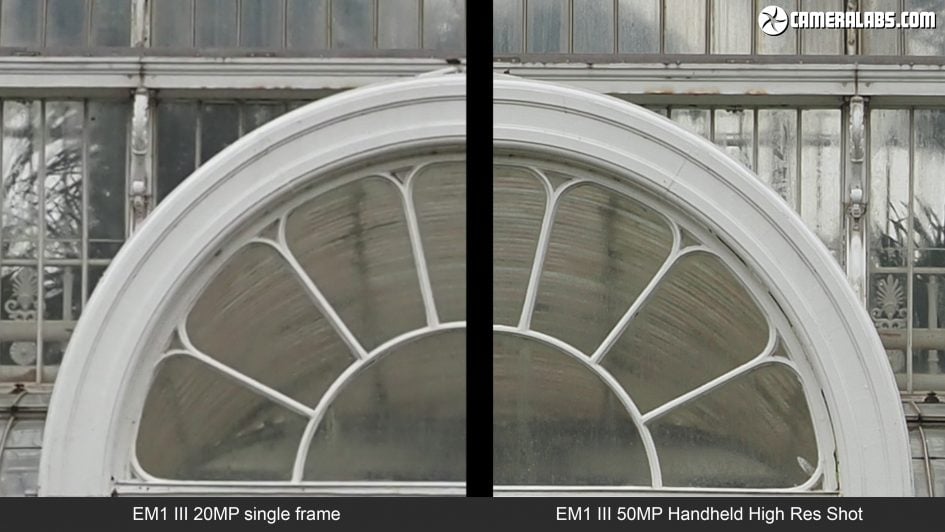
Above: The presence of the EM1X’s stabilisation coupled with the new image processor allows the EM1 Mark III to also support the handheld high res shot of the flagship body. Like the earlier Mark II, High Res Shot takes eight images, subtly shifting the sensor between each before generating a composite with potentially higher res – up to 80 Megapixel’s worth when using a tripod. The EM1X, and now the EM1 Mark III, also offer a handheld version which claims up to 50 Megapixel’s worth of detail. I’ll put it to the test more thoroughly in my final review but for now show you a couple of quick tests I made. Above are crops from a normal 20 Megapixel still image on the left, and one taken with the handheld High Res Shot mode on the right.

Above: Now here’s a second example, with a crop from the 20 Megapixel single frame on the left, and the handheld high res shot version on the right. If you look very closely, there’s definitely a little more detail in the high res versions, although like all composite modes, anything in motion can cause artefacts. As such it’s best used for still life, archive or architectural work, but the ability to now do it handheld makes it much more convenient. Oh and before moving onto video, the EM1 III’s new processor also allows it to offer the Live ND modes introduced on the EM1X which simulate the use of neutral density filters for smoothing in long exposures; check out my EM1X review to see this in practice.
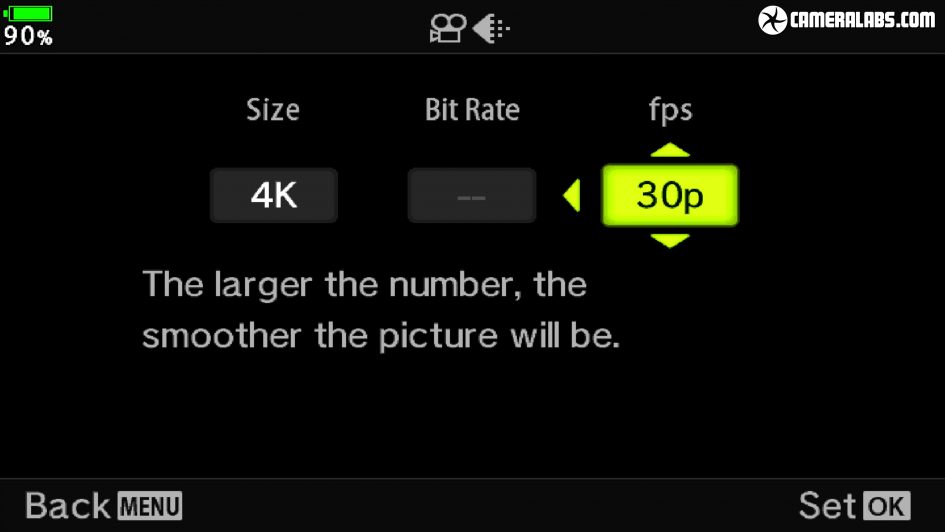
Above: Now for video and with the same sensor as previous models, it’s not surprising to find the EM1 Mark III inheriting the same core capabilities. As such you can film 4k UHD at 24 to 30p, Cinema 4k in 24p only and 1080 up to 60p, all uncropped. The EM1 III also now gives you high speed 1080 up to 120p, as well as OM Log for grading and Auto ISO in manual exposure mode; the Olympus Workspace software also lets you sync higher-resolution audio files captured with optional LS-P4 sound recorder. But as an older sensor, the EM1 III can’t magically offer 4k above 30p, a feature that’s likely to become more common during its life, but as always you have to ask yourself if you really need it, while balancing its absence against the other benefits like industry-leading weatherproofing and stabilisation.
Verdict so far
The Olympus OMD EM1 Mark III may represent a mild update over its predecessor, but given the Mark II was one of the most capable, feature-packed models of the last few years, that’s no bad thing. As such you’re getting a camera that’s tougher than most, with great ergonomics, the best stabilisation in the business, autofocus and burst shooting that’s ideal for sports and wildlife, decent video and good photo quality straight out of camera.
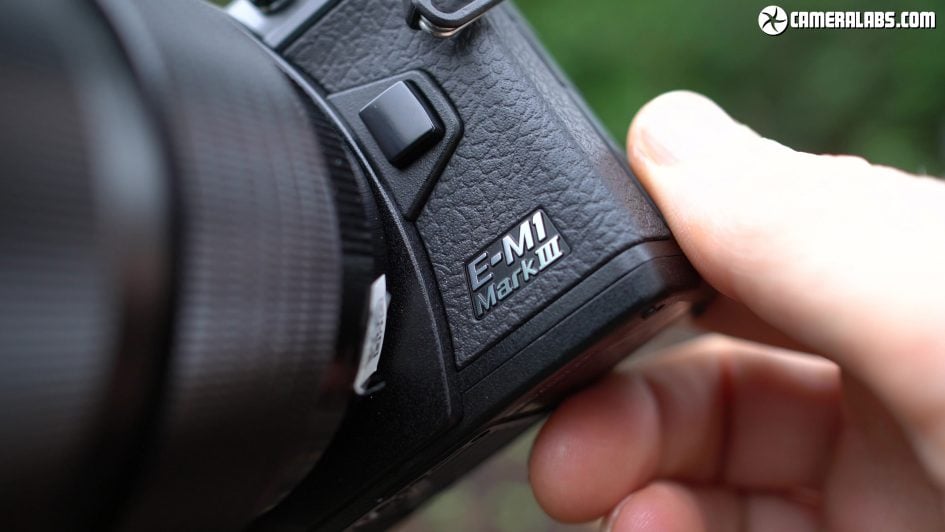
Indeed looking back at my EM1 Mark II review, the Mark III successfully addresses the handful of annoyances I had with the earlier model. Things like the addition of an AF joystick, USB power delivery and charging, Bluetooth for easier wireless, better face and eye detection, as well as 1080 at 120p, auto ISO and OM Log for movies. No one complained about the stabilisation before, but it’s even better now which, coupled with the new faster processor, also allows the Mark III to support the handheld high res shot and Live ND features of the EM1X.
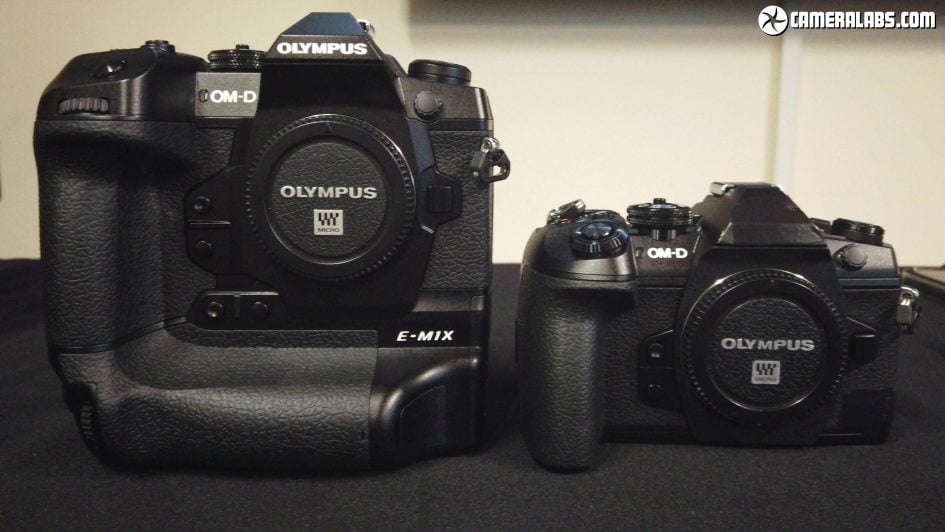
In fact the EM1 Mark III could be considered as a mini EM1X, with the flagship body only offering the built-in portrait grip with twin joysticks, dual batteries, bigger viewfinder, dual UHS-II slots and vehicle object recognition above the Mark III. In that respect the Mark III looks pretty strong, but coming from the other direction there’s no getting away from the fact it’s not hugely different from the Mark II.
If you can live without the AF joystick, USB charging, Bluetooth or 1080 at 120p, if you’re happy using high res shot on a tripod and find the stabilisation and face detection already good enough, then you would still be very satisfied with the Mark II. Olympus realises the similarities and is keeping the Mark II on sale alongside the Mark III at 300 pounds less. So do you think the upgrades are worth paying the extra?
Arguably a bigger issue for the Mark III though is the sensor which, at three and a half years old, can’t help but lack some of the capabilities of newer rivals – most notably no 4k above 30p. Every time a new camera comes out with an existing sensor, there’s always complaints, so the question you have to ask yourself is whether the photo and video quality will be good enough for you during the life of the product.
Personally speaking I have a camera with 4k 60p and rarely use it above 30p, and in terms of image quality, autofocus and burst speed I’m perfectly happy with the performance of the Olympus sensor, but your mileage may of course vary. I’m actually more annoyed there’s no upgrade to the viewfinder and disappointed there’s not two UHS-II card slots.
Ultimately everyone wants something different from their camera and while the Mark III definitely improves a body I already liked a lot, I wonder how many people would be sufficiently satisfied by the earlier Mark II. Plus anyone investing in a new camera this year should keep a very close eye on rivals – as always I’ll publish hands-on previews of all the new cameras as soon as they’re announced. No rumours or speculation – just the facts having actually used the products in person.
